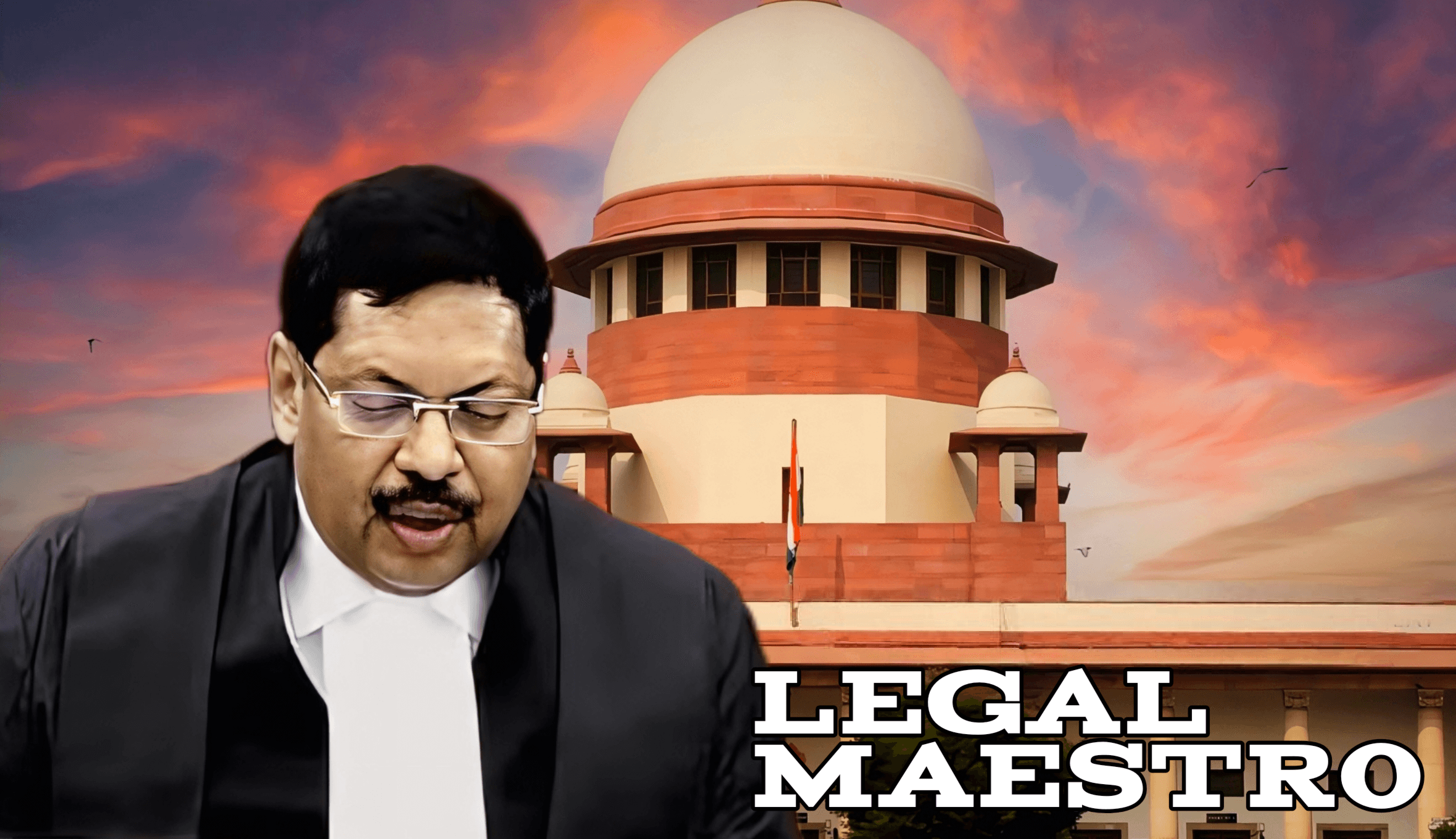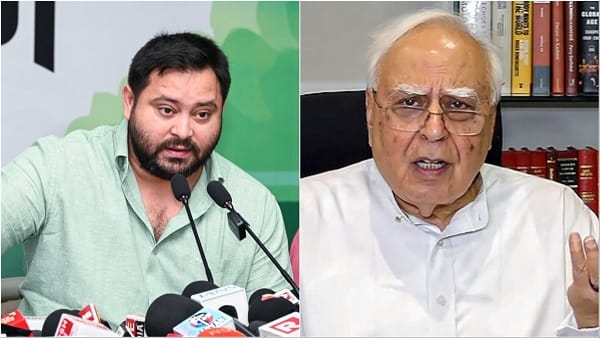
A long-standing problem concerning the pensionary rights and terminal benefits of retired High Court judges was addressed by the Supreme Court of India in its landmark decision in Suo Motu Writ Petition (C) No. 4 of 2024 – In Re: Refixation of Pension Considering Service Period in District Judiciary and High Court.
This decision was made in response to a petition presented by the Supreme Court of India. The verdict merged a number of petitions, each of which brought to light irregularities and perceived disparities in the manner in which pension, gratuity, and family benefits were distributed to judges on the basis of their former employment in the court or at the Bar.
With regard to the fundamental constitutional principles of equality, non-discrimination, and judicial independence, this case hinges around those principles.
For any queries or to publish an article or post or advertisement on our platform, do call at +91 6377460764 or email us at contact@legalmaestros.com.
It investigates the ways in which the classification of judges according to their origin, whether they came from the Bar or the District Judiciary, has led to varied treatment in terms of the pension entitlements they are entitled to.
For More Updates & Regular Notes Join Our Whats App Group (https://chat.whatsapp.com/DkucckgAEJbCtXwXr2yIt0) and Telegram Group ( https://t.me/legalmaestroeducators )
By issuing this opinion, the Supreme Court stressed the need of preserving the dignity of the constitutional position of a judge without showing any favoritism toward the foundation upon which they were appointed.
A Concise Review of the Situation
It was petitions submitted by a number of retired judges of the High Court who had previously served in the District Judiciary or who had been raised from the Bar that sparked the debate.
As a result of various gaps in service, break-in-service intervals, or the establishment of the New Pension Scheme (NPS) in the State judiciary, their principal complaint was that they were not granted a full pension and other retirement benefits.
A number of other individuals, including the family members of Additional Judges who had passed away, were not eligible for pensions or gratuities because they did not meet the requisite qualifying service periods.
The Supreme Court consolidated a number of writ petitions and addressed six primary concerns.
These concerns included the non-consideration of past District Judiciary duty, break-in-service disqualifications, consequences for the National Prosecutor’s Office, the denial of benefits to Additional Judges, and the absence of family pensions in some situations.
Statutory and Constitutional Provisions of Critical Importance
Both Article 221 of the Constitution of India and the High Court Judges (Salaries and Conditions of Service) Act, 1954 (HCJ Act) played a significant role in their respective contributions to the decision.
With a protective provision that states that no terms should be adjusted to their prejudice once they have been appointed, Article 221 guarantees that judges are entitled to salaries, allowances, leave, and pensions in accordance with the law.
In accordance with the HCJ Act:
- The provisions of Section 14 stipulate that judges are eligible for a pension upon retirement, provided that they have held their positions for a period of twelve years, have reached the age of sixty-two, or have retired owing to ill health.
- The pension entitlement of judges who held pensionable jobs prior to their elevation is addressed in Section 15, which gives them the option of selecting either Part I or Part III of the First Schedule for the purposes of calculating their pension.
- The provisions discussed in Section 17A pertain to family pensions and gratuity, which includes a minimum service requirement of two years and six months in order to be eligible for gratuity.
The pension structure is outlined in the First Schedule, with Part I covering judges who have not previously served in a position that is eligible for pension and Part III addressing judges who have served in such a capacity.
In accordance with both sections, the maximum annual salary for High Court judges is Rs. 13,50,000, while the maximum salary for Chief Justices is Rs. 15,00,000.
Important Concerns That Have Been Addressed by the Court
The Supreme Court addressed a number of important problems in a careful and thorough manner.
The fact that judges were not eligible for full pensions despite having served in the District Judiciary for a significant amount of time was a major source of discontent.
In its decision, the Court rejected the narrow notion that only service in the High Court counts toward pension and instead concluded that past judicial service must be acknowledged.
The break-in-service that occurred between retirement from the District Judiciary and elevation to the High Court was another issue that need to be addressed.
According to the government’s argument, the judge was not eligible for a full pension as a High Court judge because of the gap in his education.
This line of reasoning was rejected by the Court, which emphasized that the break, which is typically administrative in character, should not be used to punish judges.
In addition, judges who were appointed after the National Pension System was implemented were not eligible for Provident Fund benefits.
It was made clear by the Court that once a judge is nominated to the High Court, the provisions of the HCJ Act take precedence over the NPS.
This means that judges are eligible for the benefits that are outlined in the Act regardless of whether or not they were previously covered by the NPS.
As a result of insufficient service tenure, the rejection of pension and gratuity benefits was also overturned in situations involving Additional Judges or their families.
The Supreme Court ruled that these limits were arbitrary and highlighted that all judges must be treated in the same manner when entering constitutional office.
Previous judicial decisions and the doctrinal foundation
The court referred to previous decisions, such as M.L. Jain v. Union of India, Kuldip Singh v. Union of India, and P. Ramakrishnam Raju v. Union of India, while making its decision.
The necessity of ensuring that judges are treated in an equitable manner, regardless of the origin of their appointment, was brought to light by these cases.
With regard to the Ramakrishnam Raju case in particular, the Supreme Court established the principle of “One Rank One Pension” for constitutional functionaries such as judges, which ensured that they received equal benefits after they retired.
The Supreme Court made the observation that the responsibilities, stature, and constitutional duty of a judge are the same regardless of whether they came to the High Court from the Bar or the District Judiciary.
As a consequence, any distinction in pensionary benefits constitutes a violation of Articles 14 and 16 of the Constitution, which guarantee equality and non-discrimination.
Additionally, the idea of judicial independence was an important factor in the outcome. The Court made the observation that the maintenance of the independence and dignity of the judicial system requires a certain level of financial stability, which includes pension entitlements that are both predictable and equitable.
Evaluation and Conclusions of the Court to Date
It was decided by the Supreme Court that:
- There should be a requirement that judges who have been elevated from the District Judiciary have their whole service counted, and their pension should be computed based on the compensation they received as High Court judges.
- The inability to receive pensionary benefits due to a break in service cannot be considered an acceptable reason.
- Judges who were previously employed by the National Pension System (NPS) are eligible to receive benefits from the Provident Fund in accordance with the HCJ Act upon being elevated to their current positions.
- The eligibility requirements for pensions are to be applied to additional judges in the same manner as they are to permanent judges.
- Family members of deceased Additional Judges are eligible for family pensions and gratuities, provided that the deceased judge served in the capacity of a High Court judge.
- Any interpretation of the HCJ Act that leads to judges being treated differently than one another is in violation of the Constitution.
It was firmly established by the Court that every retired judge of the High Court is eligible for a maximum annual pension of Rs. 13,50,000, providing that they meet the overall service requirements, regardless of whether they served in the District Judiciary, the High Court, or the Bar.
The law or interpretation that had introduced discriminatory ceilings or excluded specific service durations was invalidated as a result of this amendment.
With this verdict, a crucial milestone has been reached in the ongoing effort to achieve equity and justice inside the judicial system itself.
The Supreme Court has strengthened the sanctity of the constitutional office by bringing together interpretations that are in disagreement with one another and making certain that all judges on the High Court, regardless of their background, are afforded equal pensionary treatment.
In addition, the ruling ensures that the family members of deceased judges will not be placed in a state of financial trouble as a result of inflexible and arbitrary interpretations of statutory provisions.
Most importantly, it reaffirms the dedication of the judicial system to protect constitutional ideals not only in society as a whole, but also within its own ranks.
In conclusion, the decision protects the dignity of the judiciary, ensures that retirees have financial stability, and reaffirms the fundamental concept of equality before the law. This is an appropriate tribute to the constitutional promise of justice for all individual citizens.




